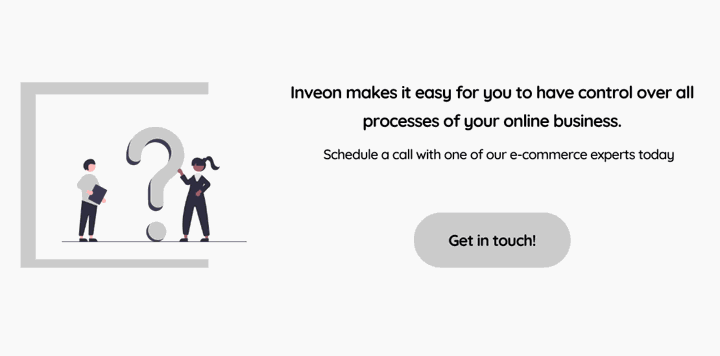
Headless commerce is a relatively new concept in e-commerce. Even if some best practices are here with us for a while now, most e-commerce professionals still don’t know very much about the details of the concept. When it comes to such a new subject that changes industry dynamics; being confused, unsure of the path, or maybe even frustrated is completely understandable. Therefore we mentioned what is headless commerce and how it will benefit your business briefly earlier in our insights. As it remains popular and there are still some question marks about the topic, in this article we’ll cover everything you need to know about headless commerce and its impact.

What is headless commerce?
If you have an e-commerce related business you have probably heard of headless commerce before. It is safe to say that headless commerce is a convenient way to manage your online store compared to traditional structures. Headless commerce is an e-commerce architecture in which the front-end is separated from the back-end core commerce functionality and may thus be changed or altered without interfering with the front-end.
In a headless structure, all the mechanisms that will power your operation in the background belong to the backend system, which can be named as “body”. Core commerce functions run in the background within the body and are built separately from the part that interacts with the consumer, which can be named as “head”. The head and the body talk with each other through APIs.
The API gateway is basically a layer that sits in front of the body and translates all of the calls from the head. With headless e-commerce architecture, APIs serve as an open platform that can be interfaced with a variety of approaches and help you move forward by building on what you already know rather than creating everything from scratch. APIs are used to allow developers, marketing, and business teams to build better buying experiences for clients that are tailored to their specific needs.
Headless e-commerce offers fast, responsible, and sustainable solutions for your business. Due to the benefits it provides, it is a preferable option to implement in terms of keeping up with today's e-commerce environment.

What Is the difference between traditional & headless e-commerce?
Compared to traditional e-commerce structures, headless commerce provides an improved way to manage an online store by allowing to make the changes more easily and independently. Using a headless commerce approach to an online store is more effective especially in terms of customer experience.
Due to the monolithic structure, in traditional commerce, any changes to the back end must also be applied to the front end. Hence quick responses to emerging needs may not be fast as needed. Also, this tied architecture can be a bit more challenging while providing personalized experiences to customers.
Since your UI & UX components are not attached to core commerce functions, headless commerce gives more flexibility and freedom in terms of customization. Headless commerce enables you to provide customers with a highly customized service that is not limited by your back-end structure.

Then again, new technologies can be tested more efficiently and rapidly in a headless environment. Because the front-end and back-end are separated, developers are able to design without being limited by the constraints of traditional e-commerce. This provides an opportunity to keep up with changing consumer demands and stay competitive.
How does headless commerce support omnichannel?
While providing omnichannel experience becoming more challenging as customer demand rise, companies may position themselves for success short and long term by using headless architecture for their platform.
The modern customer is more demanding than ever because now they know they can have more. They expect full accessibility, channel-independent seamless experience, and offerings that are designed for specific needs. Consequently, online stores are employing an omnichannel approach with the support of headless commerce to match their expectations while also improving the operational functionality of their business.
With headless commerce, a strong backbone for robust e-commerce functionalities can be built for once and then used for several different touchpoints to offer an omnichannel experience. By providing core functionalities through APIs, brands can quickly integrate new channels and new front-ends while leveraging their existing capacities. This makes it possible to offer a consistent experience across all channels, including in-store shopping, mobile apps, and many more.

Why is headless commerce trending right now?
In light of recent developments in the industry during the past two years, consumer behaviors and expectations have changed rapidly. Businesses should be faster in terms of their responsiveness and meeting the needs of their customers. Since headless commerce architecture means rapidity, flexibility, and versatility for e-commerce strategies, it is not surprising that this concept has become a popular e-commerce trend.
Gartner discovered that the value of digital acceleration has grown throughout 2020. According to the results of a recent poll, 87% of corporate directors believe that technology plays a transformative role in tackling critical business issues.
When taking all of this into account, the capabilities of headless architecture allow brands to optimize their assets for an ever-increasing assortment of channels and expectations. If brands understand the benefits of headless architecture, they can take a step beyond omnichannel and truly optimize their online shops for future needs.

Is headless e-commerce faster than traditional e-commerce?
The need of consumers to spend less time on their purchases is impacting the preferences of the customer experience. Headless commerce architecture helps to tackle this challenge. Through the separated structure of front and back ends, faster load times are a benefit of headless commerce.
As a consequence of decreasing site loading times, conversion rates increase and guarantee that nothing stands in the way of purchases. Moreover, because you can test or alter one component of your platform, such as your checkout step, without changing the overall of your storefront, overall performance will not be affected as you roll out modifications and updates.

What are the benefits of headless commerce?
Using Inveon’s headless e-commerce gives a number of advantages for your service to enhance its working system and design.
> Supports site performance
Headless commerce structure boosts the performance of your platform with rapid response capacities. Because of unchanging core e-commerce functions regardless of the front design, you can have highly performed online stores.
> Gives potential for omnichannel structures
With headless commerce, you can create a consistent user experience across all channels and devices, allowing for a streamlined shopping process for your customers.
> Support sustainable development
Headless commerce provides freedom to online store owners on their actions, when there is a new trend it will be easier to test and apply new features.
> Faster design edits
Working independently from the backend while doing front design in a headless structure, gives speed and freedom and also removes the obstacles in front of creativity.
> Improved security
By removing dependencies, decoupled architecture can prevent problems like a critical failure that can bring an entire system to a halt.

Conclusion
Headless commerce is a new alternative to conventional trade's many limitations. Traditional commerce, with its closely linked front and backend, may not meet the expectations of future customers as they increasingly resort to online purchasing to suit their needs and opt to purchase on a range of devices. Headless commerce helps businesses to have more control over the design of their e-commerce shop while providing flexibility and robustness by separating the frontend and backend of their e-commerce entities.
The world is changing so quickly, and for businesses, it is crucial to adopt that changes to survive in the industry. Headless e-commerce helps you to keep up with trends while ensuring to stay relevant in the increasing competition.
That's exactly why Inveon’s headless e-commerce architecture is uniquely equipped to handle the demands and requirements of enterprise-level clients. Our goal is to help online businesses save time and money by simplifying the operations required to achieve headless commerce. We are proud to offer our customers a complete headless commerce solution that not only provides customers with point of sales that is simple and effective but also allows them to create a customized presence according to their brand’s unique value proposition.
You can get in touch with our experts to get more information about our headless commerce platform and how will it benefit your business.

